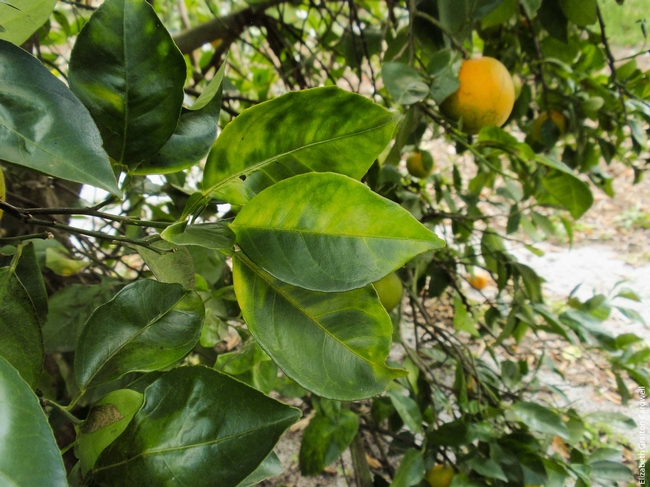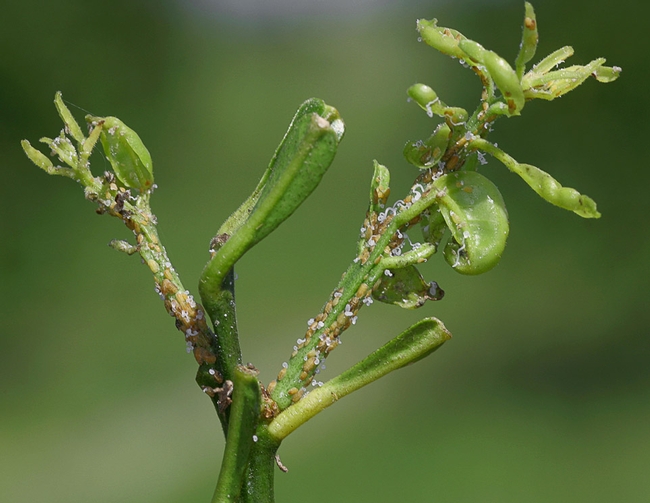Posts Tagged: citrus
UC ANR partners with Citrus Research Board to hire citrus IPM advisor
UC ANR and the Citrus Research Board are co-funding a new citrus IPM advisor position to be headquartered at the UC Lindcove Research and Extension Center. The CRB has pledged $750,000 to cover half the cost of the advisor's salary and benefits for 10 years.
The new IPM advisor will conduct a multicounty extension, education and applied research program and provide research-based technical and educational assistance to the citrus industry. The new advisor will report to the director of the Lindcove REC, with input from the Statewide IPM Program director.
"CRB's partnership with UC ANR for this position continues to strengthen the commitment towards citrus research and IPM best practices. This is a win-win for all Californians." said Greg Gibbs, UC ANR director of major gifts.
The citrus IPM advisor will help fill the role of retiring UCCE citrus entomology specialist Beth Grafton-Cardwell. The 30-year citrus IPM veteran has also served as the director of Lindcove REC since 2006.
Human Resources is finalizing the position vacancy announcement for the new IPM advisor and will open recruitment in the coming weeks.
ANR has resources for protecting citrus from ACP and huanglongbing
The incurable citrus tree disease huanglongbing, or HLB, has been detected in Los Angeles and Orange counties and most recently in Riverside. The citrus disease is spread from tree to tree by Asian citrus psyllids, the insects that move the bacteria that cause huanglongbing.
Citrus trees infected with huanglongbing develop mottled leaves and produce fruit that is misshapen, stays green and tastes bitter. There is no known treatment for the disease, which usually kills the tree within three to five years, according to UC Cooperative Extension specialist Beth Grafton-Cardwell.
Huanglongbing, which is also known as citrus greening, has already devastated the citrus industries in Florida, Georgia, Louisiana, South Carolina and Texas.
You can help prevent this disease from destroying California's citrus as well as your own trees.
Look for yellowed leaves on citrus trees. Nutritional deficiencies can also cause citrus trees to have yellow leaves so it is important to know the difference. Nutrient deficiency causes a similar pattern of yellowing on both sides of the leaf. HLB causes blotchy yellow mottling and is not the same on both sides of the leaf.
To identify the Asian citrus psyllid and the disease symptoms of HLB, see the fact sheets, videos in English and Spanish and other resources at http://ucanr.edu/acp.
If you see any trees that display symptoms of huanglongbing, contact your local agriculture commissioner.
To learn about the latest research, visit UC ANR's new Science for Citrus Health website at http://ucanr.edu/sites/scienceforcitrushealth.
More resources on Asian citrus psyllids and huanglongbing:
- Asian citrus psyllid Science for Citrus Health http://ucanr.edu/sites/scienceforcitrushealth
- ACP/HLB Distribution and Management http://ucanr.edu/acp
- UC IPM Pest Note http://ipm.ucanr.edu/PMG/PESTNOTES/pn74155.html
- Newest Detection of Citrus Greening (HLB) is in Riverside //ucanr.edu/blogs/blogcore/postdetail.cfm?postnum=24776
- UC has boots on the ground in an unrelenting search for Asian citrus psyllid //ucanr.edu/blogs/blogcore/postdetail.cfm?postnum=24752
- Detecting Asian citrus psyllid video https://www.youtube.com/watch?v=QhQXL4bwnXI
- Check your citrus trees for Asian citrus psyllid video https://youtu.be/UhqwUQm0zpk.
UCR to host citrus field day Jan. 31
The Department of Botany and Plant Sciences and Agricultural Operations at UC Riverside are hosting a Citrus Field Day for growers and industry members on Jan. 31, from 9 a.m. to 3:30 p.m.
The morning program will feature presentations in a meeting room located in Agricultural Operations. The afternoon will include a tour of the citrus variety collection, field demonstrations and lab demonstrations.
Registration is $15 and includes a barbecue lunch. Space is limited so please register by Jan. 25.
To register, please download the registration form at http://www.citrusvariety.ucr.edu.



